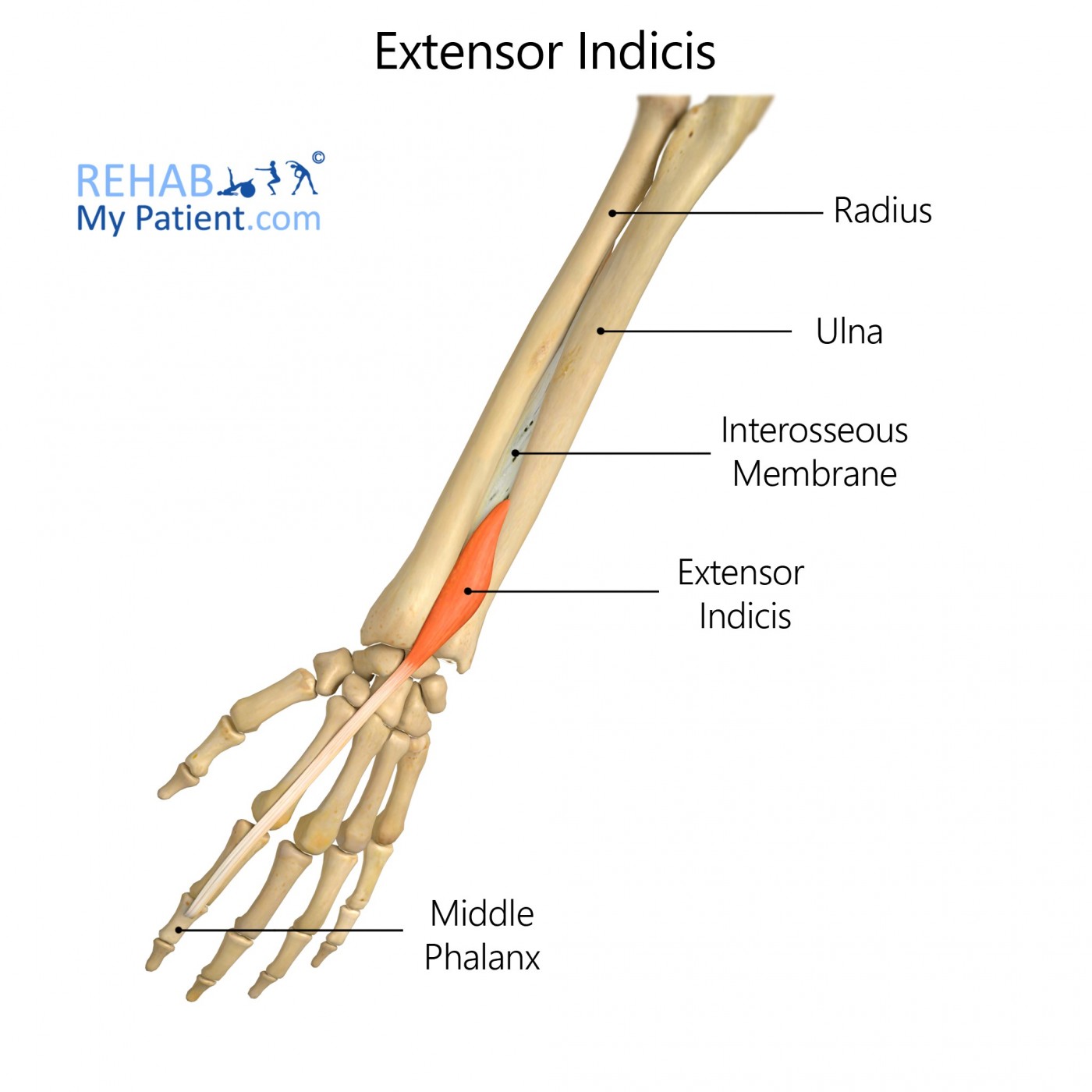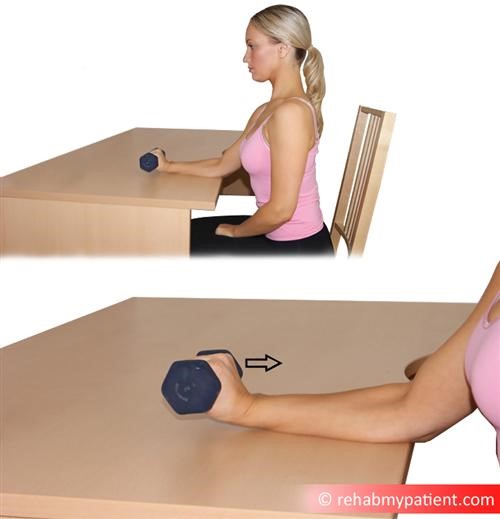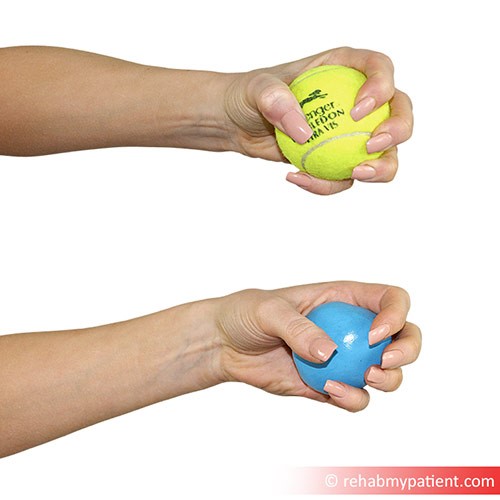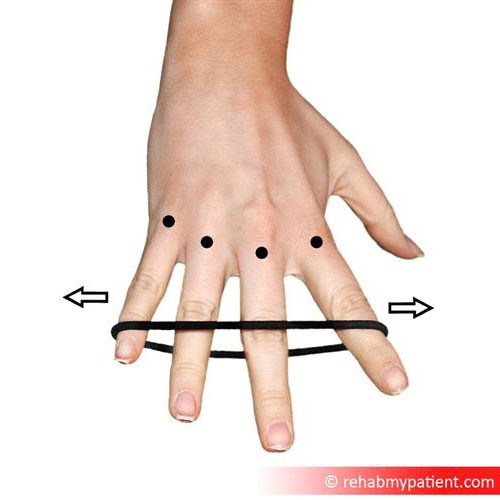
General information
The Latin name musculus extensor indicis refers to the extensor indicis (proprius) muscle, a long, slender, striated muscle tissue that assists in the movement and support of the skeleton. It is located deep in the upper layer of the forearm and is found medial and analogous to the extensor pollicis longus.
Literal meaning
The muscle that extends the index finger.
Interesting information
Similar to the extensor digiti minimi - the muscle that extends the little finger, the extensor indicis is not connected by the fibrous, oblique bands that pass amid the deviating tendons of the extensor digitorum -the muscle actively involved in the extension of fingers- on the top of the hand. Consequently, the associated fingers (both the index and little fingers) are able to move more freely than the others.
Origin
The lower end of the dorsal section of the body of ulna and the interosseous membrane- a wide and thin plane of fibrous tissue that serves to separate some bones of the body - of the forearm.
Insertion
Passes through the fourth tendon compartment, from where it projects into the upper side of the layer of flat broad tendons (aponeurosis) of the digitus secundus (index/pointer finger).
Function
Its main role is to enable the extension of the index finger by extending the metacarpophalangeal and proximal interphalangeal joints. It also aids in the upward flexion (dorsiflexion) of the wrist and the adduction of the index finger.
Nerve supply
Posterior Interosseous nerve
Blood supply
Posterior Interosseous artery

Relevant research
Transfer of the Extensor indicis proprius was found to be a success in cases where there is a rupture of the extensor pollicis longus- a muscle that supports the extension of the thumb. This is sometimes seen in persons with moderate to severe Rheumatoid Arthritis. The procedure is effective and has been noted to result in adequate long-term extension of the first digit (thumb).
Magnussen, P. A., Harvey, F. J., & Tonkin, M. A. (1990). Extensor indicis proprius transfer for rupture of the extensor pollicis longus tendon. Journal of Bone & Joint Surgery, British Volume, 72(5), 881-883
Extensor indicis exercises
Exercise bands or a cable pulley machine may be used to strengthen your wrist extensors, one of which is the extensor indicis. To do this method of exercise without the use of gym equipment, sit in a chair and rest your arm on a table with your palm facing down. Hold a dumbbell and extend your wrist. This is a strengthening exercise for the wrist, forearm, and elbow. Do this 10 times.

Another exercise involves grasping a squeeze ball, tennis ball or ball of putty in your hand. Squeeze it tightly and pull your fingers toward your hand in a fist-like form. While in this position, raise your index finger off the ball and then bring it back down against the ball. This will help to strengthen and build dexterity to the fingers.

A rather inexpensive and convenient form of exercise is with a rubber band. Place a taut rubber band around your index and second finger. Now attempt to spread the fingers apart to form the letter V. Keep this for 5 to 10 seconds and then gradually bring them back together.

Sign Up
Sign up for your free trial now!
Get started with Rehab My Patient today and revolutionize your exercise prescription process for effective rehabilitation.
Start Your 14-Day Free Trial